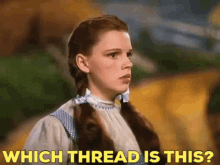laxu
Rock Star
- Messages
- 8,353
It's worth mentioning with all this talk about copies/clones etc, that there is what is illegal to do in different countries and what is morally/ethically wrong. These are often not the same thing and sometimes what the law says goes against what we would like to see in name of justice.
For a company like Behringturd doing both illegal and morally wrong things and paying the fines when sued is just the cost of doing business, which is why I won't buy anything from them.
An OEM stamping anyone's name on their pedals is not the same thing, happens all the time. You can go to a grocery store and find that the cheaper store brand product is the same as the slightly more expensive, fancier packaged brand name stuff.
It gets more complicated when we talk about e.g cloning pedal circuits. I built a Browne Protein out of kits using PedalPCB's reverse-engineered (but own PCB design) boards. You could say PedalPCB is benefiting off the work and brand name of the Browne since they list "similar to this pedal" type stuff on their website - maybe not unlike how digital modelers state what they are based on.
At the same time if I look at the schematic for the Browne Protein, it's like 90% the same as a Marshall Bluesbreaker on the blue side and same thing for the Nobels ODR-1 on the green side. Like literally 90% the same components and values. So where does that put the Browne? Just two clones packaged in one box with a few tweaks on top?
With digital it's even more complex as it can be a clone of the sound of an amp, it can be a digital clone of the circuit or it can be a digital version that sounds the same as a particular amp but can then be set up to do things that the original does not.
Or how about you find that the digital version is not accurate but actually prefer that? As an example the Strymon Iridium's "Round" amp low end does not break up like a real Fender Deluxe Reverb, but stays clean more like a Twin. But I actually really like that! It means it takes drive pedals better without becoming woofy or muddy.
I know Line6 guys have said in some interview that they'd rather build their own custom amp sims but the "look at all the classic amps modeled" sells much, much better. This is really unfortunate because a lot of companies now have digital modeling that is excellent in its own right.
But they all bandwagon around making digital replicas of real world amps rather than bringing something new based on those familiar sounds, just because that seems to be what most users are after. Captures are just the ultimate form of that where the company making the gear does not even have to do the models, just the platform to make and run them.
For a company like Behringturd doing both illegal and morally wrong things and paying the fines when sued is just the cost of doing business, which is why I won't buy anything from them.
An OEM stamping anyone's name on their pedals is not the same thing, happens all the time. You can go to a grocery store and find that the cheaper store brand product is the same as the slightly more expensive, fancier packaged brand name stuff.
It gets more complicated when we talk about e.g cloning pedal circuits. I built a Browne Protein out of kits using PedalPCB's reverse-engineered (but own PCB design) boards. You could say PedalPCB is benefiting off the work and brand name of the Browne since they list "similar to this pedal" type stuff on their website - maybe not unlike how digital modelers state what they are based on.
At the same time if I look at the schematic for the Browne Protein, it's like 90% the same as a Marshall Bluesbreaker on the blue side and same thing for the Nobels ODR-1 on the green side. Like literally 90% the same components and values. So where does that put the Browne? Just two clones packaged in one box with a few tweaks on top?
With digital it's even more complex as it can be a clone of the sound of an amp, it can be a digital clone of the circuit or it can be a digital version that sounds the same as a particular amp but can then be set up to do things that the original does not.
Or how about you find that the digital version is not accurate but actually prefer that? As an example the Strymon Iridium's "Round" amp low end does not break up like a real Fender Deluxe Reverb, but stays clean more like a Twin. But I actually really like that! It means it takes drive pedals better without becoming woofy or muddy.
I know Line6 guys have said in some interview that they'd rather build their own custom amp sims but the "look at all the classic amps modeled" sells much, much better. This is really unfortunate because a lot of companies now have digital modeling that is excellent in its own right.
But they all bandwagon around making digital replicas of real world amps rather than bringing something new based on those familiar sounds, just because that seems to be what most users are after. Captures are just the ultimate form of that where the company making the gear does not even have to do the models, just the platform to make and run them.

